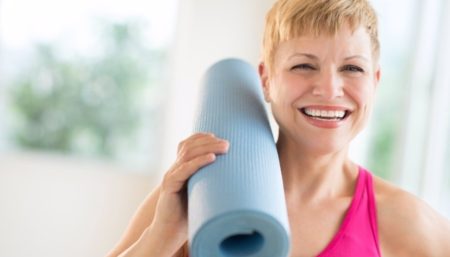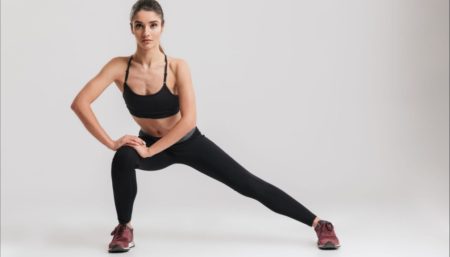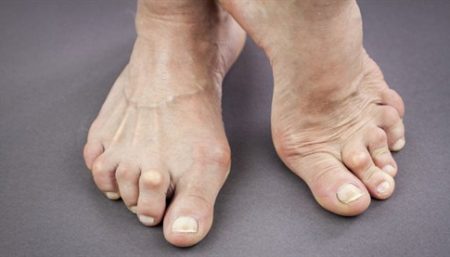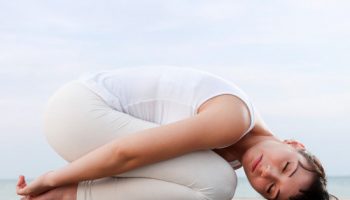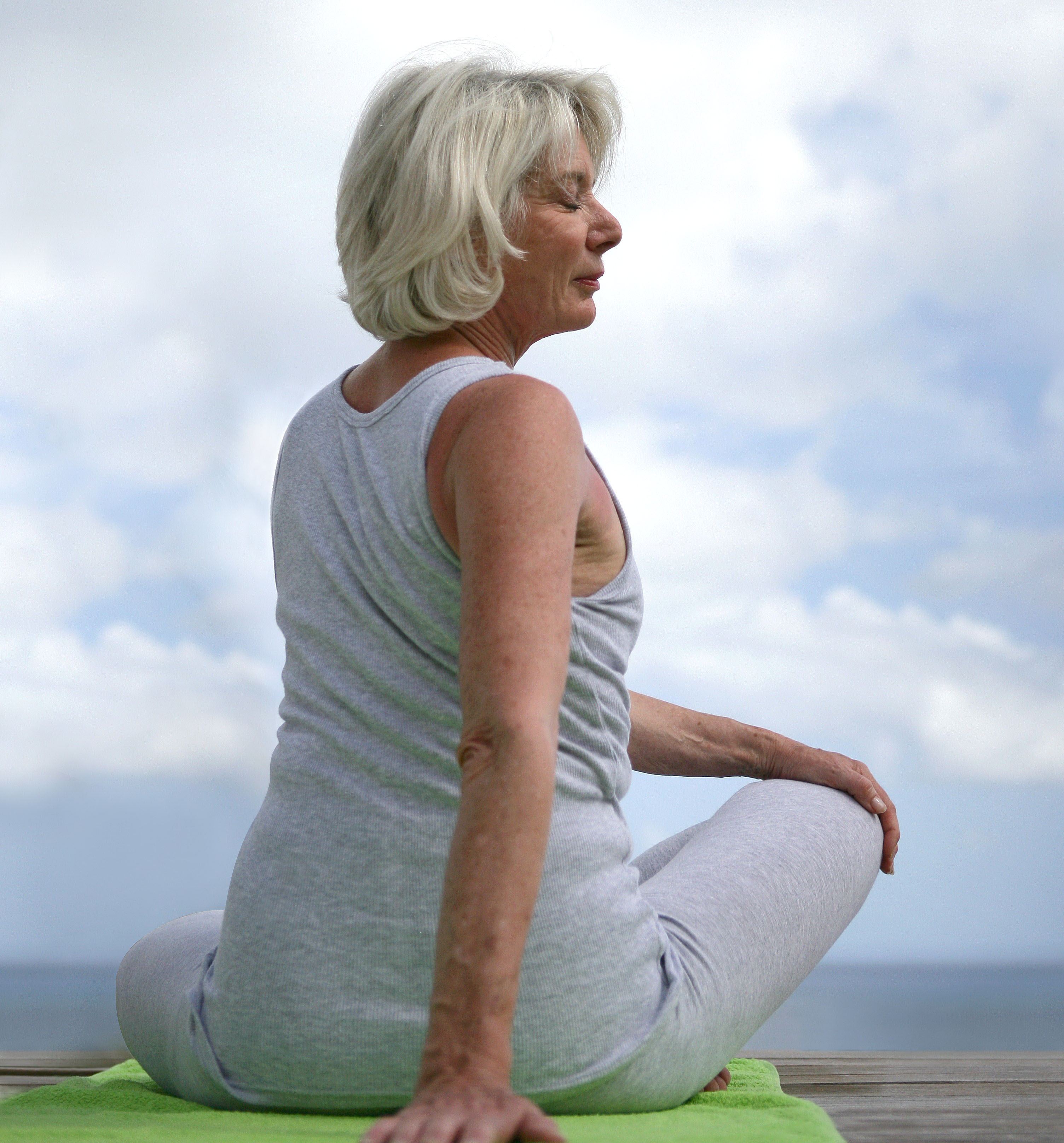
Yoga can help relieve both the pain and psychological distress suffered by patients with arthritis, according to a research. Patients with osteoarthritis and those with rheumatoid arthritis both frequently see benefits from the activity, it found.
The US research, published in the Journal of Evidence-Based Complementary and Alternative Medicine, involved a review of nine previous studies carried out between 2010 and June 2013. The studies involved hundreds of patients who took up yoga and showed evidence of reductions in pain, less morning stiffness, improved physical function and reduced levels of depression. Participants performed yoga for various periods ranging from twice a day for one week to once a week for up to 16 weeks. Sun Saluation or Suryanamskara is good for the overall flexibility of the body. This versatile yoga asana loosens up all your muscles and thus you must start your exercise regime with it. It is particularly good for your knees.
Trikonasana (Triangle pose): This asana is known for its ability to relieve pain and any disorder of the neck and shoulder. It also strengthens your legs, knees, ankles and chest.
- Stand up straight and spread your legs apart. Turn one foot outwards such that your toes are facing sideways and turn your other foot slightly inwards.
- Stretch your arms sideways. Bend at your hips and lower one arm towards the outward turned leg while allowing the other arm to rise up towards the sky. Make sure you distribute your body weight equally on both your legs.
- Now, breathe out when you bend down. Place your arm either on your ankle, shin or knee. If you are extremely flexible, try to touch the floor with your palm. Breathe in and out softly and allow your body to relax. Make sure your hips are straight and you are not bending backwards or forwards. Hold this pose for five breath counts.
- Exhale and come up to the standing position. Repeat this on the other side. It is recommended that you do not push yourself too much while doing this pose, take your time to gain some flexibility.
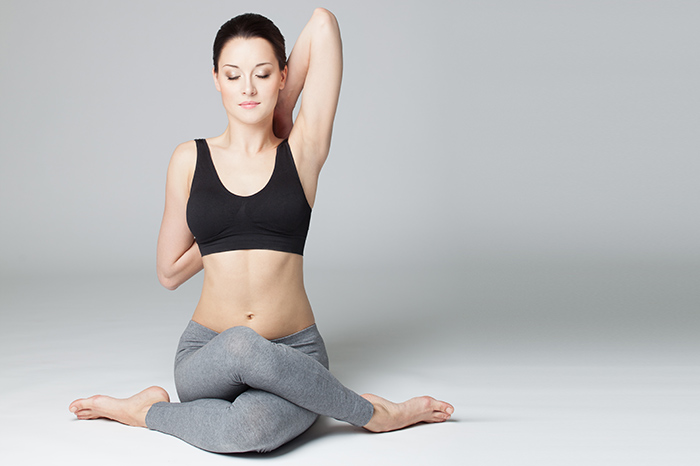
Gomukhasana (Cow face pose): This asana is great for your fingers, elbows, shoulders , neck, spine and hip joint. When it is done properly it also helps in improving the circulation of blood in the knees and ankles.
- This pose is ideally done while putting all your weight on your knees. But if you suffer from severe arthritis, you can sit in padmasana to do this pose. If you would like to try doing this asana on your knees, bend them and place them on a yoga mat – such that your upper body is erect and your keens take all your weight. Make sure your toes are pointing downwards and are driving towards the ground.
- Now take your right hand and bend it at the elbows and place it behind your back. Make sure your finger tips are pointing upwards and are close to your spine. Take your left hand above your head, while bending it at the elbow above your head. Now, while placing it at the nape of your neck, try to grasp your right hand with it. The aim of this asana is for you to be able to hold your hands behind your back.
- Breathe normally and get out of this pose by first sitting down and then bringing your hands back to their normal position.
- Note: You might not be able to place your hands together. This is only due to a lack of flexibility and it will improve with time.
Dhanurasana (Bow pose): The Bow Pose opens the shoulders and relieves them of ache. This yoga pose also adds flexibility to the back and relieves the body of stress and fatigue. Dhanurasana is also well known to be a yoga pose that can actually help you have a more powerful sexual experience. Find out how to do the dhanurasana.
- Take prone lying position, legs together, hands straight by the side of the thighs, chin resting on the ground.
- Fold the legs at the knees and bring them on the thighs. Knees must remain together.
- Bring your hands backward and hold the toes of respective legs from the thumb and forefinger of the respective hands.
- Raise your legs a little up and simultaneously raise your head and chest.
- Holding the toes, pull the legs towards ears and bring the toes near the ear. Gaze in front.
- While returning to this original position, loosen your hands, take legs backward, let the thighs touch the ground, leave the toes and ultimately bring the legs and hand to the first position.
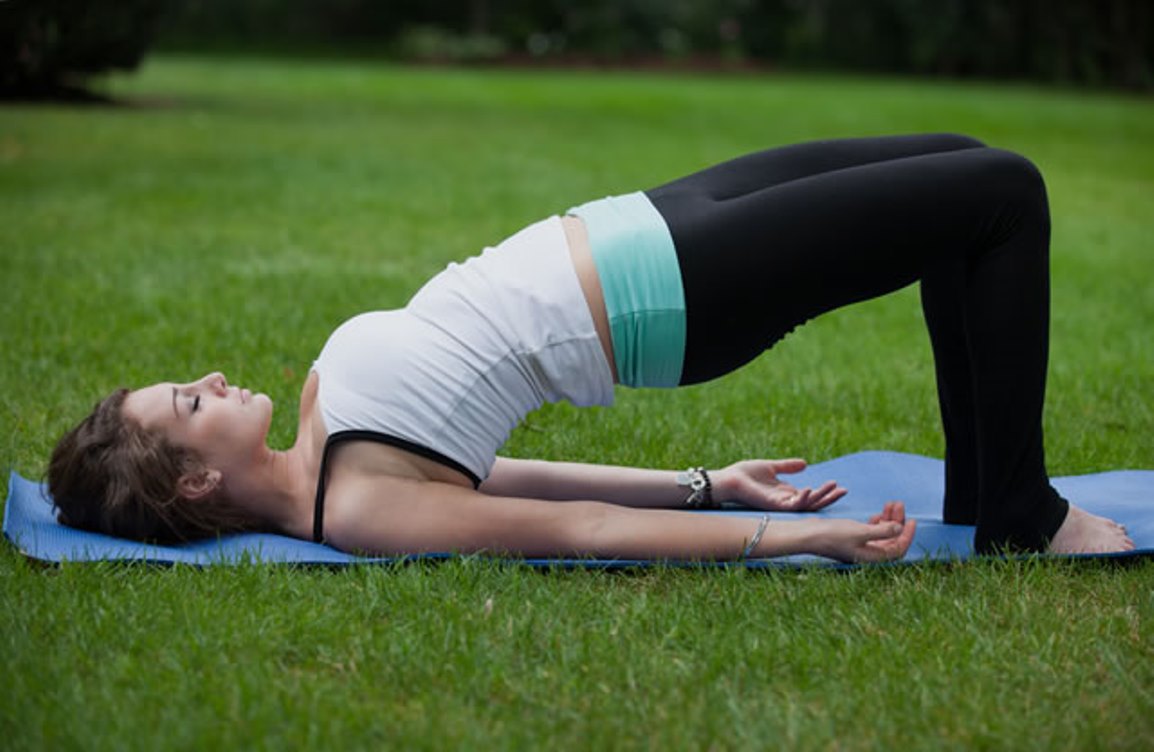
Setu Bandhasana (Bridge pose): The Bridge pose helps strengthen muscles in the knee joint and is also helpful for those suffering from osteoporosis. It also calms the brain and reduces anxiety and stress in the body.
- Come to lie on your back with the knees bent and the soles of your feet flat on the floor. Have a yoga block handy.
- You should be able to barely touch the backs of your heels with your fingertips when the arms are lying on the floor.
- The feet should be parallel and stay that way through the duration of the pose.
- Press down into the soles of the feet as you lift the hips off the floor.
- Slide your yoga block under your back directly under the sacrum. Let your sacrum rest on the block. Let the arms rest alongside the body.
- This should be a comfortable resting position. You may wish to stay here several minutes.
- To come out, press down into your feet and lift the hips again. Remove the block and gently lower your back to the floor.
Vriksha asana (Tree pose): Great for your joints and muscles, it is known to be especially great to tone up the muscles of the ankles, toes, knees, hip joints, shoulder joints, elbows, hands and fingers. It also increases the circulation of blood around the affected joints reducing the amount of pain you feel.
- Stand with your legs together. Now put most of your weight on one leg and a little weight on the other leg. Now raise the leg with the least weight such that your foot is facing inwards, towards your opposite knee.
- You can hold your ankle to help you pull up the leg. Place the heel of your foot on your inner thigh of the other leg, as close to the pelvis as possible.
- Now gently raise your hands above your head making sure your fingers are pointing towards the ceiling. Make sure you focus your mind and try to maintain your balance. Breathing steadily and focusing on one spot in front of your eyes helps in maintaining the pose and not falling over.
- In yoga, it is believed that an unsteady mind leads to an unsteady body. So the more you can control your mind the better you can do this pose. Do not try to hold a chair or wall for support while doing this pose. It will only reduce the intensity of the asana. Keep trying till you can get it just right
Veerbhadrasana (Warrior pose): The Warrior pose is a knee strengthening yoga pose that also helps people suffering from frozen shoulders. It also releases stress from the shoulders and brings balance in the body.

- Stand in mountain pose continuing with your smooth flowing breath. Jump your feet sides ways and sweep your arms out to the side so your ankles are below your wrists.
- Establish your foundation, by pulling your knees and thighs up, tucking your tailbone under, pushing your feet firmly into the floor. Visualize an imaginary line running vertically down the centre of your body, dropping your shoulders. Squeeze your arms and legs away from the centerline.
- Keep an awareness of this line as you turn your right foot out to 90 degrees and turn your left foot in to 70 degrees. Ensure the heel of your front foot aligns with arch of your back foot, hips facing forward. If your body wants to turn off centre, counter-act it by pushing simultaneously in opposite directions from the centre line.
- Inhale, an as you exhale bend your right leg, pulling up with the outside and inside of the thigh to form a right angle at the knee. Only go as low as you can with out turning your hips off centre. Ideally you want your knee directly above your ankle with you leg coming vertically out of the floor like pillar. Keep the power flowing through the back leg into the floor. Inhale lift the spine; exhale turn your head to look over your right arm. Take a few deep breaths through the nose.
- Hold the pose and breathe smooth. Reverse the procedure back to mountain pose and repeat back to the other side
Savasana (Corpse Pose): helps you, become more in touch with your body and improves your ability to control tension and to relax.
- Lie on your back, feel spread about 18 inches apart, and hands about 6 inches from your sides, palms up.
- Ease yourself into the pose, making sure the body is symmetrical. Let your thighs, knees and toes turn outward. Close your eyes and breathe deeply.
- Each time you inhale, feel a wave of oxygen flowing down to your feet; each time you exhale, feel the tension flowing out of your body, leaving your mind like a deep, still lake, without a ripple. Now dive deep into the center of this lake, deep within yourself, and experience your true nature.
According to the University of Cincinnati’s Health Promotion and Education Program, ‘By stretching the muscles, yoga can provide physical relief of symptoms around the affected joints. ‘Yoga reduces stress which is known to exacerbate arthritis. Yoga can improve coping and by altering perspective toward life provide spiritual solace.’
Ref:
Related Links
Disclaimer
The Content is not intended to be a substitute for professional medical advice, diagnosis, or treatment. Always seek the advice of your physician or other qualified health provider with any questions you may have regarding a medical condition.
